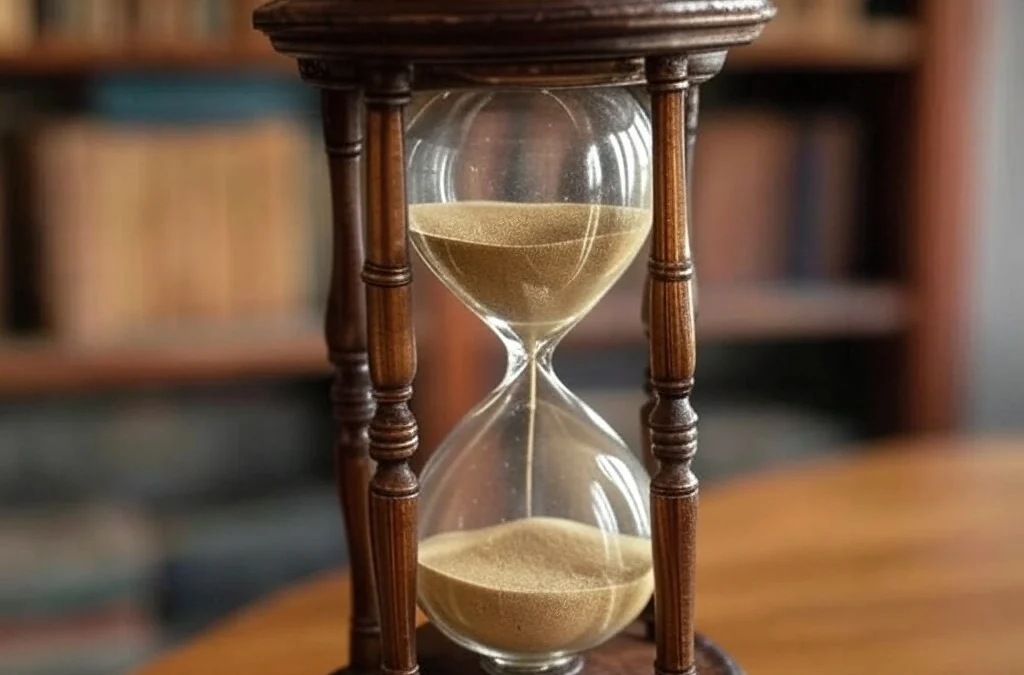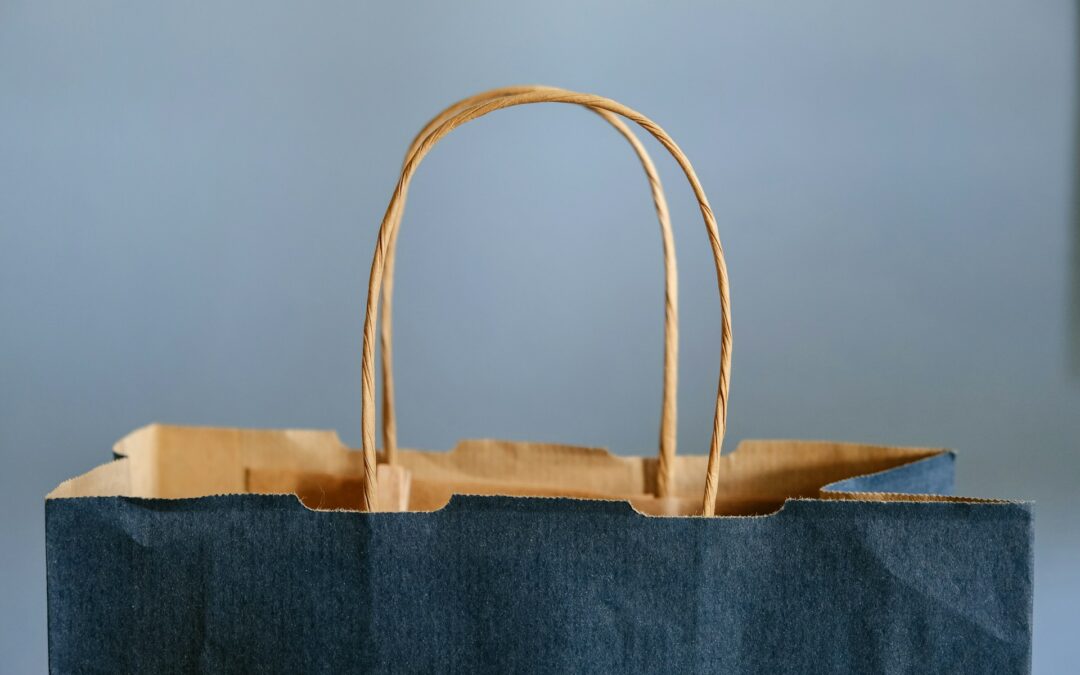In today’s rapidly evolving world, understanding consumption is more critical than ever. It permeates every aspect of our lives, from the food we eat and the clothes we wear to the technology we use and the entertainment we consume. This article dives into the top 20 examples of consumption, offering a comprehensive definition that sheds light on its multifaceted nature. By examining these examples, we aim to provide a clearer picture of how consumption shapes our society, economy, and personal lives.
Through this exploration, readers will gain insights into the various forms of consumption that occur daily, often without our conscious awareness. Whether it’s the energy consumed by our homes, the digital content we absorb, or the products that pass through our hands, each example will highlight the broader implications of our consumption habits. This article is designed to be accessible, ensuring that anyone, regardless of their background in economics or environmental studies, can understand and reflect on the significance of consumption in modern life.
What is Consumption?
Consumption refers to the process of using goods and services by individuals, households, or organizations. It encompasses the act of purchasing, utilizing, and depleting various resources and products, ranging from everyday items like food and clothing to services such as healthcare and entertainment. In economic terms, consumption is a primary component of the economy, driving demand and influencing production levels. This activity is crucial for economic growth, reflecting the overall health of a nation’s economy through consumer spending patterns. By understanding consumption, we can gain insights into consumer behavior, economic trends, and the sustainability of resource use.
Moreover, consumption plays a pivotal role in shaping market dynamics and economic policies. It not only dictates the flow of goods and services but also affects employment rates, inflation, and the development of new markets. As consumers’ preferences evolve, industries adjust their production strategies to meet changing demands, highlighting the cyclical relationship between consumption and production.
In a broader sense, consumption can also reflect societal values and trends, influencing and being influenced by cultural norms, technological advancements, and environmental concerns. For instance, the rise in sustainable and ethical consumption underscores a growing awareness among consumers about the impact of their purchasing choices on the environment and society. This shift towards more conscientious consumption patterns demonstrates how consumer behavior can drive changes in business practices and regulatory frameworks, promoting sustainability and social responsibility.
Understanding consumption in its various forms and impacts is essential for policymakers, businesses, and individuals alike. It enables more informed decisions that can lead to better economic outcomes, improved quality of life, and a more sustainable future.
The Best Examples of Consumption
1. Household Energy Use: This encompasses the electricity and gas consumed by households for lighting, heating, cooling, and operating appliances. It reflects the direct consumption of energy resources and has implications for environmental sustainability and energy policy.
2. Food and Beverages: Daily, individuals consume a variety of foods and drinks. This sector not only illustrates basic consumption needs but also shows how preferences, health concerns, and cultural trends influence consumer choices and the global food industry.
3. Transportation: The use of personal vehicles, public transport, and air travel demonstrates consumption in terms of fuel, services, and infrastructure. It highlights how mobility needs drive oil demand, urban planning, and debates on sustainable transportation.
4. Healthcare Services: Consumption of healthcare services ranges from preventive care and routine check-ups to emergency services and chronic disease management. It underscores the importance of health as a fundamental aspect of human welfare and its impact on economic productivity.
5. Digital Content: In the information age, consuming digital content, including social media, streaming services, and online news, is a daily activity for many. This example shows the shift towards intangible consumption and its implications for copyright laws, privacy, and the digital economy.
6. Fashion and Apparel: The purchase and use of clothing and accessories illustrate consumption driven by both need and desire. This sector highlights issues of fast fashion, sustainability, and the economic impact of global supply chains.
7. Educational Services: Enrollment in educational programs and courses, whether online or in traditional settings, represents consumption in the service sector. It reflects the value placed on knowledge, skill development, and the role of education in societal advancement.
8. Tourism and Leisure: Spending on vacations, cultural experiences, and leisure activities shows consumption that enhances quality of life and supports a vast industry contributing to global economic diversity.
9. Technology and Gadgets: The demand for the latest smartphones, computers, and other technological innovations is a clear example of consumption. It highlights consumer appetite for innovation, the lifecycle of products, and the rapid pace of technological advancement.
10. Financial Services: The use of banking, insurance, investment, and other financial services demonstrates consumption in the financial sector. It plays a crucial role in personal wealth management, economic stability, and the facilitation of capital flow in the economy.
11. Real Estate and Housing: The purchase or rental of homes and apartments is a major form of consumption that reflects economic status, personal preferences, and market trends. It influences construction industries, urban development, and financial markets.
12. Personal Care Products: The use of beauty and hygiene products showcases consumption in personal wellbeing and appearance. This sector highlights trends in consumer health consciousness, ethical sourcing, and the impact of marketing on consumption habits.
13. Furniture and Home Decor: Buying furniture and decor items for home or office not only fulfills functional needs but also reflects personal taste and economic conditions. It drives demand in manufacturing, retail, and e-commerce sectors.
14. Sports and Fitness: Consumption in this category includes gym memberships, sporting goods, and event tickets, illustrating the importance of health and entertainment in people’s lives. It also underscores the economic impact of sports and fitness industries.
15. Insurance Services: Purchasing insurance policies for health, property, and life is a form of consumption that provides financial security. It highlights the role of risk management in economic planning and the significant size of the insurance industry.
16. Books and Publications: The acquisition of printed and digital literature indicates consumption of knowledge and entertainment. This sector reflects changes in media consumption habits and the ongoing importance of literacy and education.
17. Gardening and Landscaping: Spending on plants, gardening supplies, and landscaping services shows consumption related to home improvement and leisure activities. It highlights the growing interest in sustainability, outdoor living spaces, and self-sufficiency.
18. Utilities and Telecommunications: Monthly payments for water, internet, cable, and phone services are essential consumption expenditures for modern living. They underscore the importance of infrastructure and technological access in daily life.
19. Pet Care Products and Services: The consumption of pet food, accessories, and veterinary services reflects the significant role pets play in many people’s lives. This sector demonstrates the economic and emotional value placed on animal companionship.
20. Art and Collectibles: Purchasing art, antiques, and collectibles is a form of consumption driven by aesthetic appreciation, investment, and personal enjoyment. It illustrates the complex relationship between value, culture, and economic status.
Why Sustainable Consumption Matters
Sustainable consumption refers to the use of goods and services that meet basic needs and provide a better quality of life while minimizing the use of natural resources, toxic materials, and emissions of waste and pollutants over the lifecycle, so as not to jeopardize the needs of future generations. It encompasses choosing products that are environmentally friendly, ethically produced, and efficiently used, as well as adopting behaviors that prioritize long-term sustainability over short-term gains. This concept is crucial because it addresses the urgent need to reduce the environmental impact of our consumption patterns, promote social equity, and ensure economic viability for both current and future generations.
By embracing sustainable consumption, we can mitigate climate change, preserve natural resources, support fair labor practices, and contribute to a healthier planet. Its importance cannot be overstated, as it is a foundational pillar for achieving global sustainability goals and ensuring a livable world for future generations.
Sustainable consumption also plays a critical role in driving the demand for green and sustainable products, encouraging businesses to adopt more environmentally friendly and socially responsible practices. It involves a shift towards consuming less and choosing products that are designed to have a minimal environmental footprint, such as those made from renewable resources, that are energy-efficient, or that can be recycled or reused. Furthermore, sustainable consumption encompasses a broader awareness of the supply chain, advocating for transparency and fairness from production to disposal.
The importance of sustainable consumption extends beyond environmental benefits; it also has profound economic and social implications. Economically, it can lead to innovation and competitiveness among businesses as they strive to meet consumer demand for sustainable products and services. Socially, it promotes a more equitable distribution of resources and supports the well-being of communities by reducing pollution and conserving natural habitats.
In the context of global challenges such as climate change, resource depletion, and social inequality, sustainable consumption represents a tangible action that individuals and communities can take to contribute to a more sustainable world. It underscores the power of collective action and the role of consumer choices in driving systemic change. By prioritizing sustainable consumption, we can help forge a path towards a more sustainable, just, and resilient future, ensuring that we live within the planet’s ecological limits while fulfilling the needs and aspirations of all people.
Types of Consumption
Here are some of the primary types of consumption:
- Personal Consumption: This involves goods and services consumed by individuals for personal or household use. It includes daily necessities like food, clothing, and housing, as well as luxury items and services for personal enjoyment or improvement.
- Public Consumption: This refers to goods and services provided by the government or public sector for collective use. It includes public goods like street lighting, national defense, public parks, and infrastructure that benefit the community or society at large.
- Business Consumption: Also known as intermediate consumption, this involves goods and services used by businesses in the production of other goods and services. Examples include raw materials, office supplies, and machinery. This type of consumption is integral to economic production processes.
- Durable and Non-Durable Consumption: Durable goods are items with a long useful life, typically over three years, such as appliances, vehicles, and furniture. Non-durable goods are consumed quickly and need to be purchased regularly, such as food, toiletries, and cleaning supplies.
- Conspicuous Consumption: This term, coined by economist Thorstein Veblen, refers to the purchase of goods and services for the purpose of displaying wealth or social status rather than for meeting basic needs. Luxury cars, high-end fashion, and expensive jewelry are typical examples.
- Sustainable Consumption: Involves selecting products and services that have minimal negative impact on the environment and society. This type includes consuming less, choosing eco-friendly products, and supporting fair trade and ethically produced goods.
- Digital Consumption: This is a growing category involving the consumption of digital media and services, such as streaming music and video, online gaming, and using social media platforms. It reflects the shift towards intangible goods in the digital age.
- Ethical Consumption: Involves making purchasing decisions based on moral values, such as animal welfare, labor conditions, and environmental sustainability. Consumers may choose products that are cruelty-free, made by companies with fair labor practices, or that contribute to charitable causes.
These categories highlight the diverse ways in which consumption occurs and the varied factors that can influence consumer behavior. By understanding these types, individuals and policymakers can make more informed decisions that align with economic, environmental, and social goals.
The Value of Consuming Less
In an age where consumer culture often dictates our measures of success and happiness, the idea of consuming less to achieve a state of contentment might seem counterintuitive. Yet, this concept isn’t merely a philosophical musing; it’s a practical lifestyle choice that many are now exploring. The question arises: Can we truly consume less and still find happiness?
At its core, happiness is a subjective state, influenced by a myriad of factors beyond the material. While the thrill of acquiring new possessions can offer temporary joy, it often leads to a cycle of endless wanting, where satisfaction is perpetually just out of reach. This cycle, fueled by the latest trends and societal pressures to keep up, can detract from the essence of what it means to live a fulfilling life.
The principle of consuming less hinges on the idea of mindfulness—being more deliberate about what we choose to bring into our lives. It’s about valuing quality over quantity and finding appreciation in what we already have. This approach doesn’t necessarily mean living a Spartan life, devoid of comfort or enjoyment. Instead, it’s about making more informed choices, prioritizing experiences and relationships over material goods, and deriving pleasure from the simple, often overlooked aspects of daily life.
Consider the sense of freedom that comes from decluttering, both physically and mentally. By freeing ourselves from the excess that weighs us down, we open up space for new experiences, creativity, and personal growth. The time and resources saved can be redirected towards activities that foster genuine happiness, such as pursuing hobbies, spending time with loved ones, or exploring the world around us.
Moreover, the act of consuming less can lead to a more focused pursuit of goals and aspirations. Without the constant distraction of acquiring and managing possessions, there’s a greater opportunity to engage with our passions and work towards achievements that bring a deeper sense of satisfaction. This isn’t to say that possessions themselves are the enemy of happiness, but rather, it’s the undue emphasis placed on them that can lead to discontent.
In conclusion, the proposition of consuming less to achieve happiness isn’t about denying oneself the pleasures of life. It’s a call to reassess what truly brings us joy and fulfillment. By shifting our focus from material wealth to the wealth of experiences and human connections, we might just find that happiness is more attainable than we thought. In this journey towards minimal consumption, the ultimate discovery is that less really can be more.
How to Spend Wisely by Prioritizing Needs Over Wants
In a world where the latest smartphone release or fashion trend can often seem like necessities, distinguishing between what we need and what we’re conditioned to want is increasingly challenging. The line between desire and necessity has blurred, prompting us to acquire things that, in truth, add little value to our lives. Becoming more aware of our consumption patterns and resisting the urge to buy unnecessarily requires a mix of mindfulness, discipline, and a shift in perspective.
The first step toward mindful consumption is to pause and reflect before making a purchase. Ask yourself: “Do I need this, or do I just want it?” This simple question encourages us to consider the utility of the item in question and whether it serves a genuine need or a fleeting desire. Often, the realization that an item is not essential can be enough to curb the impulse to buy.
Creating a waiting period before purchasing can also be an effective strategy. Giving yourself a set time frame, say 48 hours or even a week, to think over a potential purchase can provide clarity and prevent regrettable decisions. This cooling-off period allows the initial excitement to wane, offering a more rational standpoint to evaluate the necessity of the item.
Another practical approach is to declutter your living space. Organizing and clearing out items that no longer serve you can be a revealing exercise. It not only creates physical space but also highlights past consumption habits, serving as a learning tool for future purchasing decisions. Seeing the accumulation of seldom-used items can strengthen your resolve to buy only what you truly need.
Budgeting is another cornerstone of mindful consumption. By setting spending limits and allocating funds for essentials, savings, and discretionary spending, you can gain better control over your financial resources. A budget acts as a barrier against impulsive buying, ensuring that spending aligns with your priorities and needs.
Lastly, fostering an appreciation for what you already have can shift the focus from acquiring new possessions to enjoying existing ones. Cultivating gratitude for the items you own, recognizing the value they bring to your life, and caring for them can extend their lifespan and reduce the urge to replace them prematurely.
In conclusion, becoming more aware of our consumption patterns and learning to distinguish between needs and wants is a multifaceted endeavor. It involves introspection, setting intentional barriers against impulse buying, and cultivating a deeper appreciation for what we already possess. By adopting these practices, we can make more thoughtful decisions that align with our genuine needs, leading to a more fulfilling and less cluttered life.
The Most Popular on BitGlint

40 Social Dilemma Examples in the World & Real Life
Social dilemmas are everywhere. They shape the choices we make at work, in our communities, and even on a global...

30 Favor Examples & Definition
Doing a favor means helping someone without expecting anything in return. It’s an act of kindness that can strengthen...

30 Naivety Examples & Definition
Naivety is something most people experience at some point in their lives. It often starts in childhood, but for some,...

20 Chronology Examples & Meaning
Chronology is something we use more than we realize. It shows up in conversations, in how we remember the past, and in...

30 Wishful Thinking Examples & Meaning
Wishful thinking is something we all do at some point. You hope things will turn out fine—even if there’s no real...

20 Examples of Gravity & What Gravity Really Is
Gravity is one of the most important forces in the universe, but many people don’t fully understand what it really is...

20 Examples of Secondary Consumers in the Food Chain
Secondary consumers are animals that eat other animals—usually herbivores that feed on plants. They’re an important...
Get Inspired with BitGlint
The Latest
30 Flow State Examples & Definition
Most people have felt it at some point — that rare moment when everything just clicks. You're working, moving, or thinking, and suddenly it's like the rest of the world fades out. You're focused, clear, and everything you're doing feels smooth and natural. That’s...

30 Cynicism Examples in Everyday Life & Definition
Cynicism is something most people have seen, heard, or even felt - but few stop to really think about what it means. It shows up in jokes, in conversations, and in quiet thoughts we don’t always say out loud. Some people wear it like armor. Others see it as honesty....
50 Examples of Square Things
Square things are part of everyday life, even if we don’t always think about them. From objects we use at home to tools, packaging, and design elements we see out in the world, the square shape is everywhere. It’s simple, balanced, and practical — which is exactly why...
20 Hinduism Examples: Symbols, Gods & Core Beliefs
Hinduism is practiced by over a billion of people every day - but for those unfamiliar with it, it can seem complex or even confusing. With its many gods, rituals, and traditions, it raises a lot of questions. What do Hindus actually believe? What are the main...

